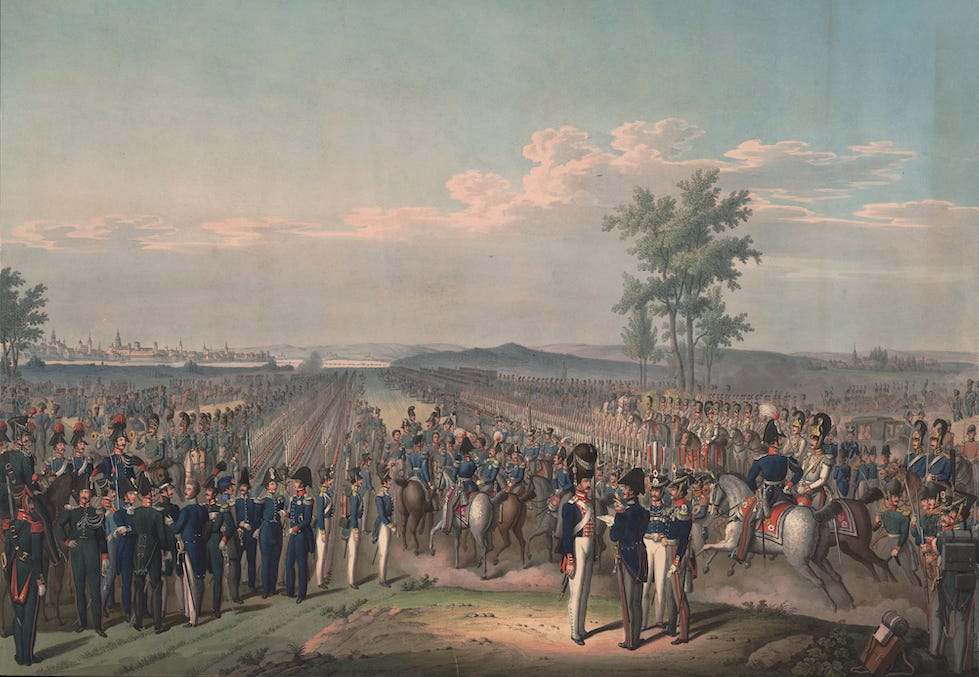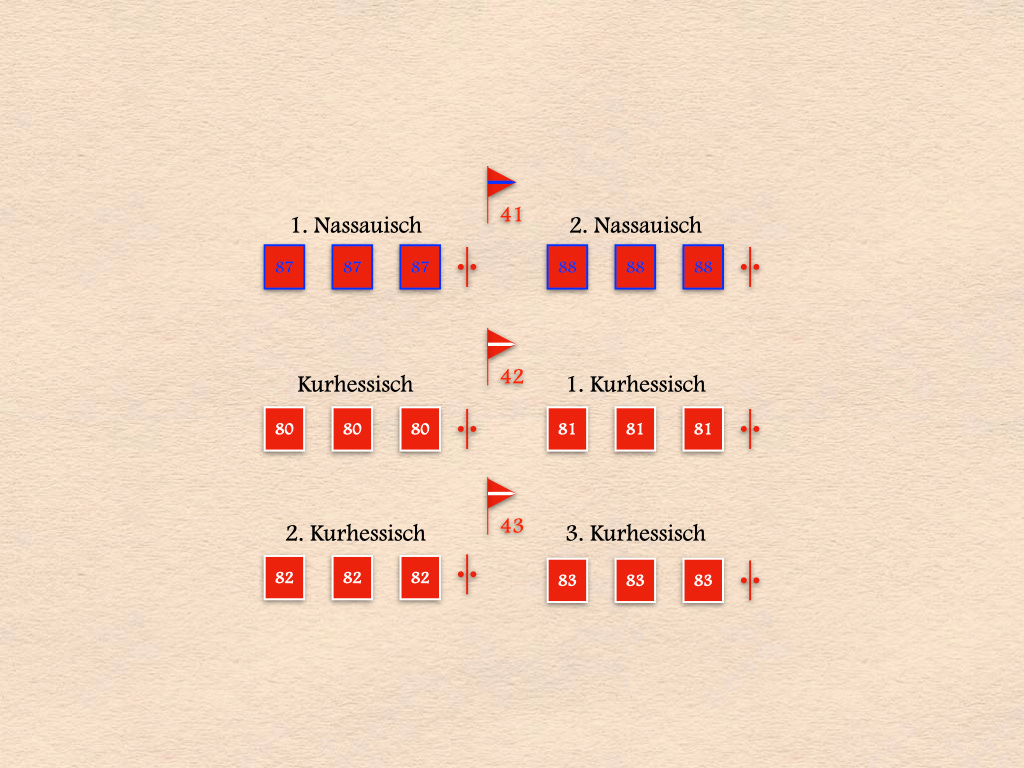
In 1866, three states that had fought on the losing side of the Austro-Prussian War - the Electorate of Hesse, the Duchy of Nassau, and the Free City of Frankfurt - lost their independence to the Kingdom of Prussia. Soon thereafter, Prussia formed the territories formerly occupied by those unfortunate polities into the Province of Hesse-Nassau. (The new province also included small pieces of territory, such as the town of Homburg and its environs, that had previously belonged to the Grand Duchy of Hesse-Darmstadt.)
On the eve of the outbreak of the First World War, seven infantry regiments bore titles linking them to the polities that had been absorbed into the Province of Hesse-Nassau. The four Kurhessische regiments were affiliated with Electoral Hesse [Kurhessen]; the two Nassauische regiments with the Duchy of Nassau, and Infanterie Regiment Hessen-Homburg Nr. 166 with the town of Homburg.
While the last-named regiment was stationed in Alsace, the other six regiments affiliated with Hesse-Nassau were garrisoned in places in (or near) the territory of their namesake states. Thus, for example, the barracks of two of the Kurhessische regiments were located in various suburbs of Kassel, which had once been the capital of Electoral Hesse. (For that reason, Electoral Hesse was sometimes called “Hesse-Kassel.”)
With the exception of the regiment in Alsace, the regiments linked to Hesse-Nassau had been paired off to form geographically homogenous brigades. Thus, the two Nassauische regiments formed the 41st Infantry Brigade, the senior Kurhessische regiments made up the 42nd Infantry Brigade, and the junior Kurhessische regiments belonged to the 43rd Infantry Brigade.
Upon mobilization, the three infantry brigades from the province of Hesse-Nassau produced a proportionally large number of second-line regiments. Rather than raising the normal number of such units (one Reserve regiment and one Landwehr regiment), each mobilized two Reserve regiments and at least one Landwehr regiment.1
This remarkable achievement may have something to do with the growth of Frankfurt. In 1895, the year in which the oldest Landwehr men mobilized at the start of the war began their term of service “with the colors,” 229,279 people lived the former free city. Between that year and 1910, the number of inhabitants had grown to 414,576.2
Whatever the reason, the mobilization of so many Kurhessische and Nassauische Reserve infantry regiments made possible the assembly of a Reserve army corps [XVIII. Reserve Korps] in which all of the infantry regiments were affiliated with either the Province of Hesse-Nassau or the Grand Duchy of Hesse-Darmstadt.
Sources: This post is based on data gleaned from the organizational appendix to the first volume of the German official history; Hermann Cron (C.F. Colton, translator) Imperial German Army: Organization, Structure, Orders-of-Battle (Solihull: Helion, 2002); Löbell's Jahresberichte über das Heer- und Kriegswesen [Löbell’s Military and Warfare Annual], 1913, pages 12 and 13; and Eike Mohr, Heeres- und Truppengeschichte des Deutschen Reiches und seiner Länder 1806 bis 1918 (Osnabrück: Biblioverlag, 1989) pages 774 and 777.
In addition to the 81st Landwehr Infantry Regiment, the mobilization authorities of the 42nd Brigade also mobilized the 80th Landwehr Infantry Regiment. However, what little evidence I can find relating to the latter unit suggests that it was an “immobile” Landwehr regiment. Thus, in keeping with the policy of this series, it does not qualify as a “second-line” unit.
Stadt Frankfurt am Main, Statistisches Jahrbuch Frankfurt am Main, 2017, page 16






